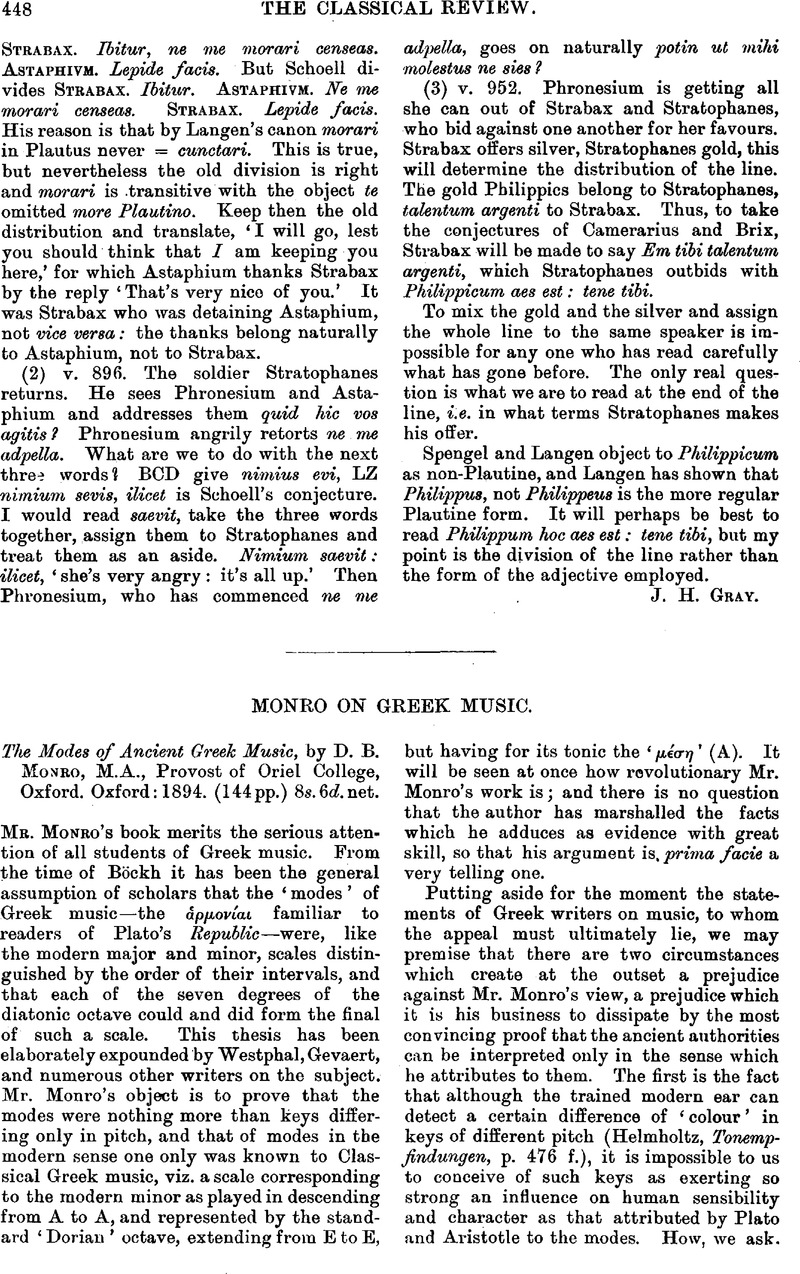No CrossRef data available.
Article contents
Monro on Greek Music - The Modes of Ancient Greek Music, by D. B. Monro, M.A., Provost of Oriel College, Oxford. Oxford: 1894. (144pp.) 8s. 6d. net.
Published online by Cambridge University Press: 27 October 2009
Abstract

- Type
- Reviews
- Information
- Copyright
- Copyright © The Classical Association 1894
References
page 449 note 1 Is it not clear that in Plat. Rep. 398 F the words ![]() are equivalent to
are equivalent to ![]() ? This is not bronght out either by Prof. Jowett's or by Mr. Monro's translation. συντονολυδιστ⋯ is mentioned few lines earlier; the term συντονοιαστ⋯ appears to have been replaced in use by μιξολυδιστ⋯ (Gevaert, i. p. 156).
? This is not bronght out either by Prof. Jowett's or by Mr. Monro's translation. συντονολυδιστ⋯ is mentioned few lines earlier; the term συντονοιαστ⋯ appears to have been replaced in use by μιξολυδιστ⋯ (Gevaert, i. p. 156).
page 450 note 1 Another instance of Plutaŕch's usage in this respect is supplied by Dr. Sandys in the last number of this Review, p. 397.
page 451 note 1 See the very clear statement of the question in La Musique da l'Antiquité i. p. 47 f.
page 452 note 1 It is strange that Mr. Monro should not mention this explanation, and still more strange that on p. 77 he should write with reference to the notation as follows: ‘The octaves which are defined by the successive pairs of letters, β-γ, δ-ε, and the rest, are octaves of definite notes. If they were framed with a view to the ancient modes, as Westphal thinks, they must be the actual scales employed in these modes. If so, the modes followed each other, in respect of pitch, in an order exactly the reverse of the order observed in the keys. It need hardly be said that this is quite impossible.’ The modes regarded as sections of the Perfect System—not necessarily ‘the actual scales employed’—did succeed each other in an order the reverse of that observed in the keys.
page 453 note 1 See Gevaert i. p. 253, with note 2.
page 453 note 2 It is noticed by Crusius, , Philologus liii. 504.Google Scholar
page 453 note 3 The same scholar suggests Θ for Ο in bar 19, i.e.
page 453 note 4 On the Seikelos inscription see Reinach, T., Revue des Études Grecques 1894, p. 203.Google Scholar


